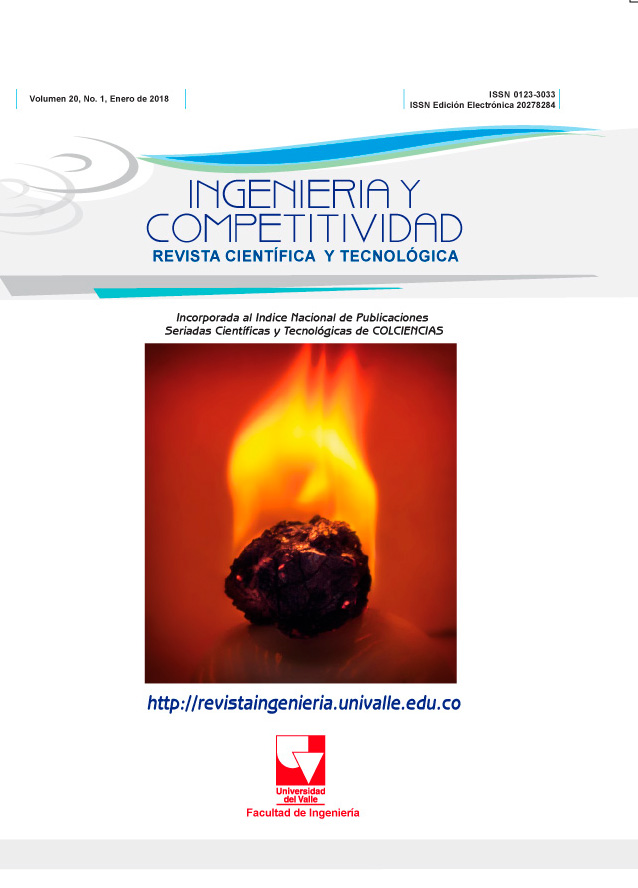Efectos de la concentración de sólidos en el fenómeno de sobre-elevación en canales artificiales curvos
Contenido principal del artículo
En el presente estudio se analiza los efectos de la concentración de sólidos en el fenómeno de sobre-elevación en un canal con una curva de 180° y de sección transversal trapezoidal constante, con lecho fijo, el fluido tiene una distribución monodispersa no coloidal de partículas aproximadamente esféricas de tamaño 1 mm, por lo que la reología del flujo puede ser descrita por la ecuación de Einstein-Roscoe. Para el desarrollo de la investigación se plantean dos fases; la
primera, correspondiente a experimentación física, por medio de un canal artificial, en el que se realizaron 420 ensayos con diferentes concentraciones de sólidos y dos pendientes, para determinar el comportamiento del flujo bifásico. Todo esto se lleva a cabo comparando resultados experimentales y con resultados obtenidos de modelos numéricos. Los datos alcanzados en el proceso experimental se comparan con los resultados obtenidos a partir de modelos teóricos reportados en la literatura. A partir del análisis realizado Se formuló una ecuación de sobre-elevación, que puede ser usada para las condiciones de flujos bifásicos expuestas en este artículo. En la segunda fase se realizan modelaciones numéricas usando el software TITAN2F, donde se replican las condiciones del laboratorio. Los datos encontrados a partir de las modelaciones numéricas se compararon con los resultados experimentales, con el fin de validar el modelo numérico que utiliza TITAN2F. De lo anterior, se pudo deducir que efectivamente, TITAN2F reproduce el fenómeno hidráulico; sin embargo, se observa que el programa tiene baja susceptibilidad a cambios de concentración de sólidos debido a la escala utilizada.
- Canales curvos, Concentración de sólidos, Sobre elevación, Titan2F
Descargas
Los autores que publican en esta revista están de acuerdo con los siguientes términos:
Los autores ceden los derechos patrimoniales a la revista y a la Universidad del Valle sobre los manuscritos aceptados, pero podrán hacer los reusos que consideren pertinentes por motivos profesionales, educativos, académicos o científicos, de acuerdo con los términos de la licencia que otorga la revista a todos sus artículos.
Los artículos serán publicados bajo la licencia Creative Commons 4.0 BY-NC-SA (de atribución, no comercial, sin obras derivadas).





